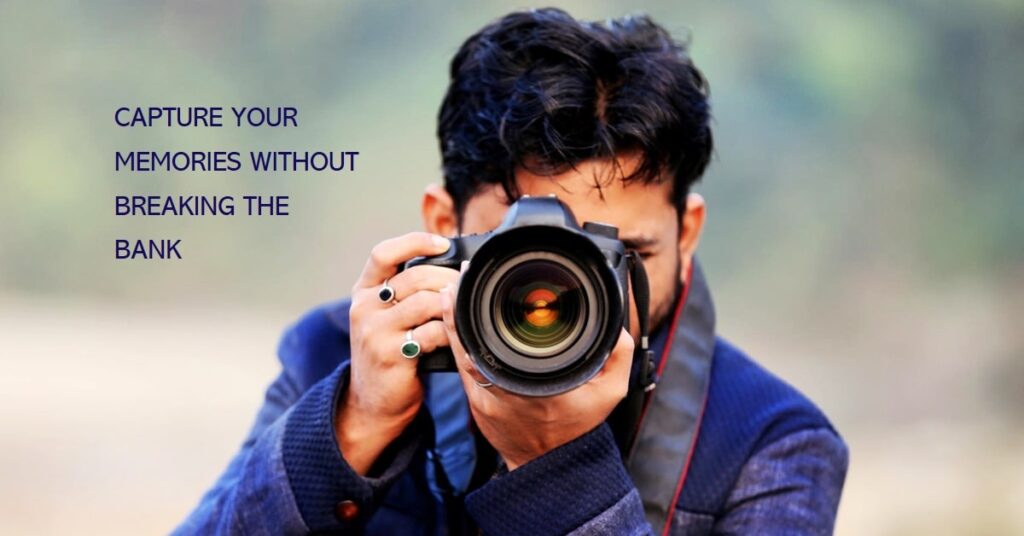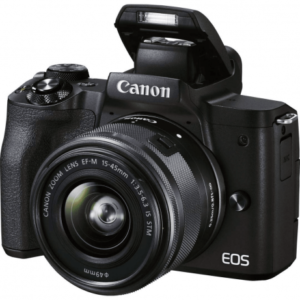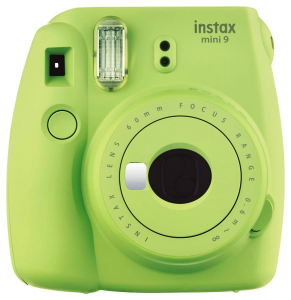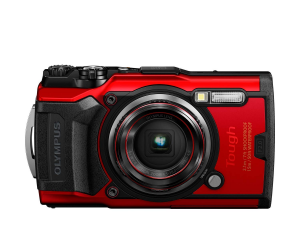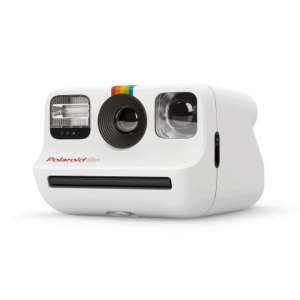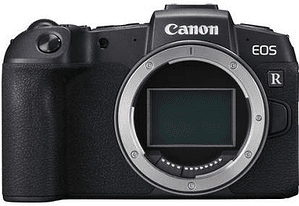A decent camera may be an invaluable travel companion, capturing your adventures to share with friends and family. But choosing the ideal camera for your needs can be difficult when there are so many alternatives to select from.
Smartphones are good but they are not perfect for capturing your moments. So here is a list of the Best Budget Cameras for Travelling India.
Join Explore India Community
Your Best Budget Camera For Travelling India Guide
How To Choose The Correct Travel Camera
Camera Types: DSLR Vs Mirrorless
Here is a list of different types of cameras available. All of them are suitable for specific needs but only two of them are best suited for travel. These are Mirrorless cameras and DSLRs so we will be discussing in detail about them.
- Compact Cameras
- DSLR Cameras
- Mirrorless Cameras
- Action (Adventure) Cameras
- 360 Cameras
- Medium Format Cameras
- Traditional Film Cameras
A DSLR (digital single lens reflex) camera works by having a mirror inside it. When you look through the viewfinder, the mirror is down and covering the sensor, so you see a reflected scene.
When you press the shutter button, the mirror mechanically flips up, allowing the image to be exposed onto the sensor and finally into your SD card. All of these moving bits require significant space, which is why DSLRs are bulkier.
There are no moving parts inside mirrorless cameras. The image is projected onto the sensor directly from the lens. There is an electronic viewfinder, which means that instead of a live view, you see a digital duplicate of what you’re aiming the camera at.
With no mirror to constantly flip, the camera can be made much smaller. As a result, mirrorless cameras can be half the size of DSLRs.
When mirrorless cameras initially became available, the quality was subpar. They are now nearly on a level with DSLRs, and their portability makes them the greatest cameras for trip photography!
If you’re not sure what we mean, this post goes into greater detail, but in essence, we recommend purchasing a mirrorless camera.
People Also Read: Best Camera for Beginners
Price
This is very crucial. Cameras range in price from a few thousand to lakhs. So, you should absolutely consider how much money you want to spend. There will always be some compromises between price and quality.
While you want to obtain the greatest shots possible, traveling might expose you to hazards ranging from loss to theft. Obviously, these are things that insurance may cover, but it’s something to keep in mind when making a purchase – the more expensive the camera, the greater the insurance rate.
Weight
If you prefer to travel light, you won’t want to bring a big DSLR with you. Having the best vacation camera in your hotel room while you’re out having fun isn’t going to help you much.
If you want something that will actually fit in your pocket or purse, even a mirrorless system may be too much for you, and your best bet is probably a smartphone or compact camera.
If image quality and low-light performance are more essential to you than weight, and you don’t mind carrying spare lenses, filters, and other equipment, you should choose a mirrorless or DSLR system.
Remember that, as a general rule, the larger the camera, the more space it has for a larger sensor. A bigger sensor allows the camera to capture more light, resulting in crisper, cleaner photos even when shooting in low-light conditions.
Resolution/Megapixels
Megapixels are something that camera vendors and salespeople like to talk about. But what does that actually mean? A pixel is a tiny dot of color that appears on the screen of your computer or phone.
A megapixel is one million of those dots. So ’24 megapixels’ means around 24 million color dots. You may have heard that higher megapixels imply better photo quality, however, this isn’t exactly correct. The sensor has less to do with image quality than resolution, although it does have a role.
In summary, unless you want to display your photographs on billboards, don’t get too caught up in getting a camera with greater megapixels. Instead, use this guide to the best travel cameras to choose which model is the most value for money.
Manual Configuration
A camera with manual settings gives you complete control over things like aperture, ISO, and shutter speed. This opens up a whole new realm of innovation, and we believe that a camera without this capability should not be considered.
Fortunately, most recommendations on this list, allows you to select those settings!
Video in 4K
It’s 2023, so grab a camera that can shoot 4K video! When filming a video, this provides considerably higher quality, and if you don’t have a 4K monitor at home, you can always take that clip and watch it in high definition 1080p, or even crop it into your footage.
Just be aware that 4K video consumes a lot of battery life and storage so make sure you have some spares!
Weatherproofing
Unless you want to travel in great weather, it’s a good idea to acquire a camera that is either waterproof or has good weather sealing.
Unfortunately, unless you buy a GoPro, you frequently have to compromise on a waterproof camera or a great travel camera, therefore we don’t advocate purchasing a totally waterproof camera.
Instead, if you want to get into underwater photography, make sure it has good sealing or consider purchasing an underwater housing.
Zoom
When deciding on the best travel camera, the ability to zoom in on a subject is critical. When purchasing a fixed lens camera, look for one with a long zoom range.
You don’t have to worry about this if you buy a mirrorless camera or DSLR because you can always upgrade later.
Stabilization
When taking handheld shots, no matter how stable you believe you are, there will almost always be some camera wobble. This isn’t an issue if you’re shooting at high shutter speeds. However, if you picture in poor light, you may get motion blur.
To counteract this, look for cameras with built-in image stabilization.
Top Budget Camera For Travelling India
Nikon D3500
The Nikon D3500 is a 24 Megapixel entry-level DSLR with an APS-C CMOS sensor that is less expensive, lighter and has a longer battery life than its predecessor, the D3400. It is one of the Best Budget Camera For Travelling India.
It was created with the beginner photographer in mind, and it has a Guide Mode that will teach you how to shoot in various circumstances.
The Nikon D3400 was a massively successful and popular DSLR, and the Nikon D3500 carried the torch into the mirrorless era. DSLRs are becoming less ubiquitous, but thanks to their optical viewfinders, they continue to offer outstanding value when compared to mirrorless cameras – and the Nikon D3500 remains the best affordable camera for novices.
The main differences between the D3400 and the D3500 are an upgraded APS-C sensor (though still with 24MP) and an even greater battery life of 1,550 frames per charge, compared to the D3400’s very respectable 1,200 shots per charge.
You also receive an improved grip and a slightly revised, somewhat lighter body. While there are mirrorless alternatives to the Sony A6000, the D3500 is more user-friendly, especially if you want to use it with longer lenses.
Overall, it produces high-quality photographs and is really simple to use and comprehend – especially for novices.
Key Features
- 24-megapixel APS-C CMOS sensor
- EXPEED 4 image processor
- ISO range of 100-25600
- 11-point autofocus system through the optical viewfinder
- Shoots continuously at 5 frames per second
- Capable of ‘Full HD’ 1080/60p video
- Bluetooth for image transfer
- 921k-dot fixed LCD screen
- Battery rated for 1,550 shots per charge (CIPA)
Pros
- Controls and menus that are simple to use
- Beginners will benefit from Guide Mode.
- Bluetooth LE built-in for SnapBridge compatibility (but see related Con)
- Amazing value
- Excellent battery life
- Design that is small
- Deep, comfortable grip
Cons
- The optical viewfinder’s coverage accuracy is below average.
- There is no 4K video.
- There are no headphone, external microphone, or auxiliary jacks.
Panasonic Lumix FZ80 / FZ82
The Panasonic LUMIX DC-FZ82 is a super-zoom bridge camera with a 60x zoom lens with a 20-1200mm focal range. An 18.1-megapixel High Sensitivity MOS sensor, a 3-inch 1040K-pixel LCD touchscreen, a 1,170k Live View Finder (LVF), and 4K (3840 x 2160pixel) video recording at 30/25/24fps with the ability to extract 8-megapixel photos from the 4K video are among major features.
There’s an ISO range of 80-6400, burst shooting at 10 frames per second (AFS) / 6 frames per second (AFC), 1cm macro shooting with Post Focus and Post Focus Stacking, a flash hot shoe, and inbuilt Wi-Fi connectivity.
The Panasonic Lumix DC-FZ82 delivers high-quality photos. It produces noise-free photographs from ISO 80 to 400, with just minor noise appearing at ISO 800. ISO 1600 has noticeable noise and loss of fine information, whereas ISO 3200 and 6400 are significantly noisier but still suitable for small prints and web use.
The Panasonic FZ82 handles chromatic aberrations as well, with just minor purple fringing effects seen in high-contrast conditions. Indoors, the pop-up flash performs admirably, with no red-eye and enough exposure. The night shots are fantastic, with the highest shutter speed of 60 seconds allowing you to capture a lot of light.
Key Features
- 1/2.3-inch High Sensitivity MOS sensor, 18.1MP
- 20-1200mm f/2.8-5.9 zoom lens
- 3.0-inch touchscreen, 1,040,000 dots
- Wi-Fi connectivity
- ISO range of 80-6400
- 1040K-pixel LCD touchscreen
- 4K (3840 x 2160pixel) @30/25/24fps
Pros
- Strong optical zoom
- Image stabilization that works
Cons
- No eye sensor for EVF
Canon EOS M50 Mark II
The Canon EOS M50 Mark II is a small and simple mirrorless camera with a 24MP APS-C sensor. It has just minor improvements over its predecessor, but it has an appealing price point, pleasant ergonomics, and solid image quality and is the Best Budget Camera For Travelling India.
Autofocus improvements, vertical video shooting, and the ability to live stream to YouTube directly from the camera are among the new features.
The first update to the EOS M50 Mark II concerns the Dual Pixel autofocus technology, which now offers eye-tracking AF for both stills and movies. Face detection was the only option on its predecessor by the way.
The camera can now record vertical video and can be used to live stream to YouTube if an image is also set up. Because the camera employs the same sensor as its predecessor, it’s not surprising that the image quality is nearly equal.
You’ll receive vibrantly colored JPEGs with a decent degree of contrast, and the out-of-camera JPEGs required very little additional processing to be ready to share on social media.
If necessary, Canon’s CR3 Raw format offers significantly more editing options. When we looked at Raw photographs from the M50 Mark II at low ISOs in highly light circumstances, we didn’t observe any difficulty with adequately enhancing shadow details.
Key Features
- 24-megapixel APS-C sensor
- Digic 8 image processor
- Dual pixel autofocus with eye tracking
- Fully articulated touchscreen LCD
- 2.36M-dot electronic viewfinder
- 7.4 fps bursts with continuous autofocus
- 305 shots per charge battery rating
- Wi-Fi and Bluetooth
- Web cam capability with Canon’s EOS Webcam Utility
- Wireless YouTube live-streaming capability (if you have over 1,000 subscribers at the time of this writing)
Pros
- Lightweight design with lenses for 24MP APS-C image
- Bursts of 10fps with wide-focus coverage
- Touchscreen LCD that swings out
- Eye-level EVF integration
- Allows for the use of an external microphone
- Bluetooth, Wi-Fi, and a camera are all supported.
Cons
- Cropped 4K video with slower autofocus
- Short battery life
- Doesn’t support USB charging
- Small burst capture buffer
Canon EOS 2000D
The Canon EOS Rebel T7 / EOS 2000D is a low-cost DSLR with an APS-C sensor. It improves on its predecessor, the Canon EOS Rebel T6 / EOS 1300D, with a higher-resolution 24-megapixel sensor, but otherwise makes no changes to the formula.
That’s not a terrible thing for photographers looking for a simple and affordable DSLR, but don’t expect frills like an articulating touchscreen or 4k video capability.
For landscape photography, the Canon Rebel T7 is adequate. Image quality is inferior to that of full-frame or higher-end APS-C cameras, but it is still quite good for its class.
Though its dynamic range is mediocre, it can nevertheless produce amazing landscape images, especially with good lighting conditions.
The camera is also quite easy to use, with simple controls geared for beginning photographers, while more experienced shooters may find the lack of command knobs restricting. It also has a cheap feel to it and isn’t weather-sealed.
The Rebel T7/EOS 2000D specifications are rather basic, with Canon’s long-running entry-level nine-point autofocus system, an ISO range of 100-6,400, three-frame-per-second continuous shooting, and a non-articulating back screen.
However, Wi-Fi and NFC connectivity are provided for wirelessly connecting with other devices. This is all extremely rudimentary by today’s standards, but for budget-conscious beginners, the 2000D is still a good place to start in serious photography.
The autofocus isn’t the fastest, the 3fps burst mode is slow by today’s standards, and the T7 only takes 1080 video rather than 4K, but the 24MP sensor produces nice, clear results, and at current prices, this camera is a steal.
Key Features
- Sensor: 24.1MP APS-C CMOS, 22.3 x 14.9mm
- Image processor: Digic 4+
- AF points: 9-point AF (1 cross-type)
- ISO range: 100 to 6,400 (exp 12,800)
- Max image size: 6,000 x 4,000
- Metering zones: 315 zones
- Video: 1,920 x 1,080 at 30/25/24p
- Viewfinder: Optical pentamirror, 95% coverage
- Memory card: 1 x SD/SDHC/SDXC
- LCD: 3-inch fixed, 920k dots
- Max burst: 3fps
- Connectivity: Wi-Fi, NFC
- Size: 129 x 101 x 78mm
- Weight: 475g (with battery and memory card)
Pros
- Easy to use
- Sensor with high resolution
- Wi-Fi is built-in.
Cons
- Fixed, non-touchscreen display
- There is no 4K video.
- Only 95% of the optical viewfinder is visible.
Panasonic Lumix ZS100 / TZ100
The usage of a 1-inch sensor size in small cameras has greatly improved the image quality of a pocketable point-and-shoot camera.
However, these models have often featured relatively short zooms with wide aperture designs that thrive in low light and generate shots with a pleasingly narrow depth of field, such as our Editors’ Choice Sony RX100 III.
The Panasonic Lumix DMC-ZS100 takes a different approach, packing a 10x zoom into a small package. However, its lens does not collect much light and loses quality as you zoom in, making its increased reach doubtful.
The ZS100 has a small body and a lens that protrudes slightly even when collapsed. It has dimensions of 2.5 by 4.4 by 1.7 inches and weighs roughly 11 ounces.
When you turn on the camera, the 10x lens expands from the barrel and telescopes even further out as you zoom. It has a 25-250mm zoom range and an aperture that maxes out at f/2.8 at the widest angle and drops to f/5.9 when zoomed in all the way.
Compare this to the Canon PowerShot G7 X Mark II, which has a more modest 24-100mm range but an aperture that starts at f/1.8 and narrows to f/2.8 at 100mm—a setting at which the ZS100 maxes out at f/5.2, nearly two stops dimmer.
Key Features:
- 20MP – 1″ MOS Sensor
- ISO 125 – 12800( expands to 80 – 25600)
- 25-250 mm F2.8-5.9 Zoom Lens
- 5-axis Optical Image Stabilization
- 3.00″ Fixed Type Screen
- 1166k dot Electronic viewfinder
- 9.9fps continuous shooting
- 4K at 30fps and FHD at 60fps Video Recording
- Built-in Wireless
- 312g. 111 x 65 x 44 mm
- Also known as Lumix DMC-TZ100
Pros
- Excellent photo quality
- The ideal combination of zoom and size
- Excellent autofocus system 4K video
- The built-in EVF Touch functions on the 3″ LCD are well-designed, as is the 10 fps burst shooting (6 fps with continuous AF)
- Post Focus and 4K Photo are useful features.
- Effective 5-axis image stabilization when recording Full HD video Well-implemented Wi-Fi In-camera Raw conversion USB charging
Cons
- EVF is small and subject to color tearing
- The lens is slow at the long end
- The lens can be very soft at some focal lengths
- Yellows and skin tones tend to be greenish
- Noise reduction obliterates detail at higher ISOs
- Hybrid OIS system struggles when panning during video capture
- Tilting LCD would’ve been nice
- Body material is slippery and a fingerprint magnet
- Lacks NFC, which would make pairing and sharing easier with Android devices
- Lack of an external charger makes it hard to keep a spare battery topped-up
Nikon D5600
The Nikon D5600 is a far cry from shooting with a large enthusiast SLR like the D7200 or D500. It’s small and unobtrusive, but the image quality is excellent, and the vari-angle screen makes it really versatile.
However, the SnapBridge experience is disappointing, but now that this camera is three years old and prices have plummeted, there are some appealing offers on this DSLR.
The Nikon D5600 is the most current addition to the Nikon D5000 camera family. The Nikon D5600 is a step up from the Nikon D3500, filling the gap between that model and the more enthusiast- and pro-oriented Nikon D7500 and D500.
The D5600 is almost as compact and light as an SLR-style mirrorless camera, yet the grip is deep and well-sculpted, so you still have a good grasp. However, some of the buttons are rather small. This has no effect on their operation, although the icons are a little more difficult to read.
The new AF-P 18-55mm lens significantly improves the camera’s Live View functionality. It’s still not as fast as a mirrorless camera, but the Live View autofocus’s speed and responsiveness are certainly unexpected – and it works really well with the screen’s touch control.
Simply tapping an object in the scene causes the camera to focus on that object and capture a picture in a single action. The SnapBridge system performs less well. It worked perfectly, albeit slowly, on an Android smartphone, but the iPhone operating system requires you to manually select a Wi-Fi connection.
The autofocus, white balance, and exposure mechanisms on the D5600 performed admirably. Most of the time, you can leave the camera to figure out the proper settings and it will do so consistently.
- Sensor: 24.2MP DX-format CMOS (Expeed 4)
- Lenses: Nikon F (DX format)
- Memory: SD/SDHC/SDXC
- Viewfinder: Eye-level pentamirror viewfinder, 95% coverage
- Max video resolution: Full HD (1,920 x 1,080) at 60, 50, 30, 25 or 24p
- ISO range: 100-25,600
- Autofocus points: 39 (9 cross-type)
- Max burst rate: 5fps
- LCD screen: 3.2-inch, vari-angle, touch-sensitive, 1,037k-dot LCD
- Shutter speeds: 1/4,000 sec to 30 sec, Bulb
- Weight: 465g (with battery and memory card)
- Dimensions: 124 x 97 x 70mm
- Power supply: Lithium-ion EN-EL14a battery, 820 shots
Pros
- The image quality is excellent.
- Longer battery life
Cons
- Only 1080p video is supported.
- Expensive
- live view AF with only contrast detection
- People with larger hands may find it too tiny.
Fujifilm Instax Mini 9
The Instax Mini 9 camera, a matching strap, a pack of batteries, and a close-up lens adapter all for just Rs. 5,999. Now that’s what we call a budget camera. The new camera comes in a variety of wacky pastel colors, including Lime Green, which we have today.
The Fujifilm Instax Mini 9 is entirely made of plastic, yet the fit and finish are excellent, with no rough edges or misaligned joints. Around the back is a small box for the film cartridge, an optical viewfinder, and a counter that displays the number of unused film sheets.
The batteries are located on the side of the camera, and there is a loop for the wrist strap on each side. The instant film sheets for the Instax Mini 9 take 62 x 46cm photographs.
Each film sheet includes chemicals in a little pouch at the bottom, and when exposed to light, the chemicals are forced into the frame by rollers as the film is ejected from the camera.
The film is exposed for a few seconds after you push the shutter button, but it takes around two minutes to properly develop. Just like classic Polaroids, you may customize the white frames with messages, drawings, and so on.
The camera has a two-element lens and a shutter speed of 1/60th of a second that is fixed. The aperture changes based on the exposure mode and can range from f/12.7 to f/32. Regardless of the lighting circumstances, the flash always fires.
The close-up lens attaches to the front of the primary lens and allows you to photograph items up to a foot distant from the lens. Other than turning it on and shooting, there isn’t much to this camera.
Pros
- It’s a lot of fun to use.
- AA batteries are used to power it.
- Viewfinder optical.
- Mirror for taking selfies.
- A macro adapter is included.
- Film in both color and black and white is available.
- There are numerous color options.
- Inexpensive.
Cons
- Not entirely automatic.
- There is no tripod socket.
- Landscape photography is made difficult by the placement of the shutter.
Olympus TG-6
The Tough TG-6 is Olympus’ sixth-generation premium underwater camera. It has a 12 Megapixel sensor, a 4X optical zoom lens, various sensors, and, of course, substantial weather protection.
The TG-6 maintains the same pocketable but durable form factor as its predecessors. Its dimensions are 2.6 by 4.5 by 1.3 inches, it weighs 8.9 ounces, and it can endure enough pressure to be used in fifty feet of water.
You may have it in either black or red. Many pocket cameras have extremely long zoom ranges. However, waterproof cameras must keep lenses completely inside the body.
The TG-6 has the same 25-100mm zoom as previous TG models. It has an aperture of f/2 at its widest angle, which is useful for taking photos in low light, but drops to f/4.9 when zoomed in all the way.
The TG-6’s macro focus and zoom capabilities set it apart from action cameras. The GoPro Hero8 Black has a considerably wider lens and more comprehensive video and slow-motion features, but it’s not suitable for macro images because the lens just does not focus close.
The TG-6 comes with GPS as well as Wi-Fi for connecting to your smartphone. The GPS is easily turned off and on by utilising the Log toggle button on top of the camera body. But be sure to turn it off before putting it away for the day—even with the camera turned off, it will deplete the battery.
- 12MP, 1/2.3″ BSI-CMOS sensor
- 25-100mm equivalent F2.0-4.9 stabilized lens
- Waterproof to 15m (45ft), shockproof from 2.1m (7ft), crushproof to 100kgf (220lbf), freezeproof to -10°C (14°F), dustproof
- 3″, 1.04M-dot display (non-touch)
- Raw support
- 1cm (0.4″) minimum focusing distance
- 20 fps burst shooting
- Pro Capture mode saves photos before and after the shutter release is pressed, to help you capture the right moment
- 4K/30p video
- Built-in GPS, altimeter, compass, thermometer and accelerometer
- Optional conversion lenses and flash accessories
Pros
- 4K video and high-speed video
- Mode Brilliant Microscope
- Photographs in RAW format
- Macro modes are quite useful.
Cons
- Only a 12MP image resolution is available.
- There is no complete manual control.
- Quite costly
Olympus PEN E-PL10
The Olympus PEN E-PL10 is a Micro Four Thirds lens mount mirrorless camera with a 16 Megapixel sensor and in-body image stabilisation. Its small size and simple touch-based interface make it suitable for beginners and families, while a flip-down LCD and 4K video make it suitable for bloggers.
The Olympus EPL10 retains its predecessor’s 16.1 megapixel Live MOS sensor, but the picture processor has been improved to the quicker TruePic VIII technology seen in Olympus’ professional models.
It has in-body image stabilisation that can compensate for up to 3.5 stops when used with the M.Zuiko Digital ED 14-42mm F3.5-5.6 EZ lens kit lens.
On the video front, the E-PL10 records in 4K 30p and 1080p, with the ability to extract still photos from films. The Olympus EPL10 also has a 3-inch flip-down LCD touchscreen, Wi-Fi and Bluetooth connectivity.
Along with that it comes with 16 Art Filter choices, an ISO 100-25600 sensitivity range, 8.6 fps burst shooting with AF/AE tracking, 121 contrast-detection AF points, and Live Composite, Multi Exposure, and Silent shooting modes.
Key Features
- 16.1 megapixel Micro Four Thirds CMOS sensor
- Micro Four Thirds lens mount
- 3-axis sensor-shift image stabilisation (up to 3.5 stops)
- 3inch tilting touch-screen, 1040k dot resolution
- 4K video at 30/25/24fps
- FullHD video recording at 60p, stereo sound
- ISO100 to ISO25600 (extended)
- Bluetooth and Wi-Fi connectivity
- 8.6fps continuous shooting, up to 14.1fps using the electronic shutter
- HDR, Focus Peaking
- 31 Art Filters
- Available in all black, white/silver, and brown/silver
Pros
- Lots of beginner-friendly modes
- In-body image stabilization
- In-camera Raw editing
- Lovely JPEG color rendition
- Silent shutter mode
Cons
- There is no viewfinder option.
- A little dated sensor
- Contrast AF is hit-or-miss.
Panasonic Lumix GX80/85
The Panasonic Lumix DMC-GX85 is a mid-level interchangeable lens camera with a 16MP Four Thirds sensor and 4K video recording capability. It is one of the Best Budget Camera For Travelling India.
The GX85, which sits right behind the flagship GX8, is aimed at hobbyist photographers and filmmakers. It does not use the new 20MP Four Thirds chip seen in the GX8, but rather the classic 16MP sensor seen in many other Micro Four Thirds cameras.
It also lacks the tilting EVF, weather-sealing, and microphone input found in the GX8. Although it lacks the new 20.3MP sensor seen in the higher-end GX8, it is a version of the Four Thirds-size sensor that does not include an antialiasing filter.
Cameras employ them to gently blur edges, which removes some color artefacts that would otherwise show, but at the expense of sharpness. To compensate, the company’s Venus image-processing engine, which is found in the GX85, includes Moiré -reduction built in.
There’s also a useful tilting screen, a nice viewfinder, and a good selection of suitable lenses for the Micro Four Thirds format. It’s not as stylish as Olympus or Fujifilm models, but it’s a nice alternative if you want a strong and trustworthy model at a low price.
- 16MP Four Thirds MOS sensor
- Electromagnetically driven shutter
- Depth from Defocus AF
- 2.76M-dot field sequential EVF
- 1.04M-dot tilting touchscreen display
- 4K video / photo
- 5-axis image stabilization with Dual I.S.
- Bouncable pop-up flash
- Wi-Fi
Pros
- Excellent image and video quality in 4K
- There are no visible evidence of shutter shock.
- Depth from the Defocus AF technology provides excellent depth and subject tracking.
- Excellent touch functionality and implementation on a tiltable LCD
- Dual I.S. is a 5-axis in-body and in-lens shaking reduction system that may be used for both stills and videos.
- Interface that can be customised, including physical buttons and a touchscreen
- Touchpad AF allows you to choose a focus point on the rear screen while looking through the viewfinder.
Post Focus is a useful function. - 4K photography decreases ‘lost chances.’
- Excellent Wi-Fi functionality
Cons
- Due to ‘colour tearing,’ using a field sequential electronic viewfinder might be disturbing.
- When shooting in the native 4:3 stills aspect ratio, the 16:9 EVF feels strange.
- The back control dial appears to be too small.
- The on/off switch is in an inconvenient position.
- Auto ISO implementation that is overly simplistic
- The battery charger is not included.
- There is no headphone or microphone jack.
- There is no weather sealing.
Sony Cyber-shot RX100 III
The RX100 III finds a much more similar balance to Panasonic’s LX series, with a more consistently quick lens and wider angle starting point, but less reach at the telephoto end.
Sony uses a new 24-70mm equivalent F1.8-2.8 lens in the RX100 III, which is faster and wider than its predecessors, but at the price of telephoto power.
When you combine the RX100 III’s fast lens and larger-than-average sensor size, it offers better low-light performance and deeper depth-of-field at the telephoto end than most other enthusiast compacts.
While the lens is undoubtedly stunning, the RX100 III’s pop-up electronic viewfinder, which has never been done before, is likely to garner the most attention.
Not only is it ‘cool,’ but also allows you the option of always having an EVF ready without adding considerable heft to the camera. Even among enthusiast compacts, the inclusion of a viewfinder places the RX100 III in a very select company. This makes it the Best Budget Camera For Travelling India.
Key Features:
- 20.1 megapixel 1″-type Exmor R BSI-CMOS sensor
- 24-70mm equiv. F1.8-2.8 Carl Zeiss Vario-Sonnar T* lens
- Pop-up SVGA OLED electronic viewfinder with 1.44M dots
- 3-inch tilting WhiteMagic LCD with 1.23M dots
- 1080/60p video with full sensor readout and 50Mbps XAVC S support
- Clean HDMI output
- Zebra pattern and focus peaking
- Customizable front lens ring
- 3-stop neutral density filter
- Wi-Fi with NFC and downloadable apps
- 320 shots per charge (CIPA standard)
Pros
- In a tiny camera, image quality is unrivalled.
- EVF is a fantastic addition.
- Big sensor
- Sized to fit in a pocket
- High-quality viewfinder and built-in EVF
- The built-in ND filter aids both video and still photography in bright light.
Cons
- Price
- somewhat larger than previous versions
- A clickless, somewhat sluggish control dial can make shooting feel disconnected.
- It lacks a hot shoe and 4K resolution.
- Inability to manually choose AF locations on the back screen
Olympus OM-D E-M10 Mark IV
The Olympus OM-D E-M10 Mark IV is an excellent travel camera. It has the excellent image quality and operates well in low light. It’s also quite light and portable, though individuals with large hands may find it too small.
Its advertised battery life is adequate, though this can vary depending on settings and usage habits. The camera supports USB charging, but it cannot be used while charging. While it autofocusses, technology excels at detecting moving objects, it fails miserably at tracking faces. It’s also not weatherproofed.
It has a 20MP Four Thirds sensor, in-body image stabilization, a flip-down touchscreen interface, and 4K video capture. The new Olympus OM-D E-M10 Mark IV has a new 20MP sensor, progressively better in-body image stabilization, and a new flip-down and tiltable display.
The Mark IV is expected to be a new favorite for anyone seeking an entry-level camera that can do pretty much everything, as it retains the 4K video and attractive aesthetics that made the Mark III so appealing to consumers.
The Olympus OM-D E-M10 Mark IV is slim, elegant, and incredibly light. This Micro Four Thirds camera is likely to amaze with an improved 20MP sensor and focusing improvements.
Olympus may have just made news with its shocking sale, but the release of the Olympus OM-D E-M10 Mark IV demonstrates that the imaging manufacturer is back to business as usual.
Key Features:
- 20 Megapixel Live MOS sensor (Four Thirds)
- TruePic VIII processor
- 5-axis in-body image stabilization (up to 4.5 stops)
- 121-point contrast-detect AF system
- Flip-down touchscreen display
- Electronic viewfinder
- 4.5 fps burst shooting w/AF
- USB charging
- Wi-Fi + Bluetooth
- 360 shots per charge (with LCD)
Pros
- Dinky dimensions are correct.
- Easy point-and-shoot operation
- Battery rechargeable
Cons
- Fixed focus can be inconvenient
- There is no separate close-up mode
- Film is more expensive than competitors
Polaroid Go
The Polaroid Go is the world’s smallest instant camera. It fits in the palm of your hand, takes pictures with a point-and-click interface, and includes a clever mirrored viewfinder for framing selfies.
That’s all well and good, but the film yields tiny prints with lackluster colors. Images captured by the Polaroid Go just lack impact, and the film is pricey.
The lens has almost the same field of view as a 35mm prime lens. It’s suitable for both single and two-person selfies. Plastic optics are standard for low-cost instant cameras.
Print details are a tad soft, but the photos are little, to begin with. When shooting into the sun, the lens flares, therefore avoid shooting backlit scenes.
The camera has a 34mm lens with a variable aperture of f/12 to f/52, a shutter speed range of 1/125 to 1 second, and a flash. The camera is totally automatic, but it has a nine-second timer, a double exposure option, and a manual flash toggle.
Unlike traditional Polaroid cameras, the Go’s battery is incorporated within the camera rather than in the film cartridges. It has a 750mAh rechargeable battery, and a full charge should last through 15 packs of film, or approximately 120 photos.
When it comes to film packs, a new, smaller camera necessitates a new, smaller film format. Polaroid’s Go film, like the camera, is the company’s smallest yet, with each film pack carrying eight shots.
Key Features
- f/12 and f/52 apertures
- The focal length of 51.1mm
- Shutter speeds range from 1/250 to 1 second
- Automatic flash can be disabled
- Viewfinder doubles as a selfie mirror
- Double exposure mode
- Self-timer, but no tripod mount
- LED frame counter window
- Compatible with Polaroid Go film, 8 shots per pack
- Pocket-sized
- Built-in battery with USB-C charging, 120 shots per charge
Pros
- Design is small and light.
- Polaroid aesthetics from the past
- Exposure with a single touch
- Mirror for self-portraits
- Charging through USB
Cons
- Film is expensive and finicky.
- Small prints
Canon EOS RP
The Canon EOS RP is one of the tiniest and lightest full-frame cameras on the market, as well as the most affordable full-frame camera ever upon launch. It is one of the Best Budget Camera For Travelling India.
The RP is a nice small camera with solid JPEG image quality that will be a fine photographic partner for casual users and those already within the Canon ecosystem seeking a compact second body, even if its specifications aren’t going to set the world on fire.
The Canon EOS RP’s inexpensive pricing will appeal to enthusiasts and expert amateurs looking to join the swelling ranks of full-frame mirrorless users.
Given the availability of EF and EF-S lens adapters, the most logical market for this camera is current Canon DSLR users with a hoard of Canon glass.
However, given its low price, brand allegiance should not deter anyone looking to upgrade to a full-frame mirrorless camera from seriously considering the EOS RP.
Despite its complex features, the EOS RP is rather simple to operate, and DSLR photographers, particularly those who are experienced with Canon cameras, will have no trouble moving to this model.
Canon’s features, both practical and creative, provide a plethora of controls for professional photographers as well as more entry-level-friendly alternatives for those looking to go progressively into advanced photography.
Whether photographing blossoming plants or insects, the Canon EOS RP generated photographs with appealing, natural-looking hues. For most test images the Auto Picture Style was a perfect choice, which seemed to work well in most situations, but there are lots of additional options, including Standard, Portrait, Landscape, Fine Detail, Neutral, Faithful, and Monochrome.
You can also make three of your own personalized Picture Styles. Individual adjustments can be made to predefined and custom-style characteristics like sharpness, saturation, and color tone.
Key Features
- 26.2MP Dual Pixel CMOS sensor
- 4K/24p (from 1.7x crop region)
- 4 fps continuous shooting with continuous AF (5 without)
- Pupil detection AF in continuous/Servo AF mode
- AF rated to -5EV (with an F1.2 lens)
- Digic 8 processor
- 2.36M dot OLED viewfinder
- Fully articulated 1.04M dot touchscreen
- Twin command dials
- CIPA rated to 250 shots per charge
Pros
- Body is slim and light.
- Screen with full articulation
- 4K resolution video
- LCD with a variable viewing angle
- EVF integration
- Autofocus that is quick and precise
- Wi-Fi
- Reasonably priced
Cons
- The body feels little for such large RF lenses.
- In 4K, there is a 1.6x crop and no Dual Pixel AF.
- Poor battery life
- Face and eye detection is inconsistent.
- There is no built-in flash.
Join Explore India Community
And there you have it. A complete guide to Best Budget Camera For Travelling India 2023. Make sure to like and share this article to your friends looking for a new camera. Also make sure to comment your views and suggestions below.
You may also like Top 13 Lightweight Travel Trolley Bags in India 2023.
FAQs (Frequently Asked Questions)
The following are the best cameras for tourism and Best Budget Camera For Travelling India:
1. Nikon D3500
2. Panasonic Lumix FZ80 / FZ82
3. Canon EOS M50 Mark II
4. Canon EOS 2000D
5. Panasonic Lumix ZS100 / TZ100
6. Nikon D5600
7. Fujifilm Instax Mini 9
8. Olympus TG-6
9. Olympus PEN E-PL10
10. Panasonic Lumix GX80/85
Purchasing a genuine, high-quality camera for travel is a significant investment. While cameras are more inexpensive than ever before, they are still somewhat expensive. Travelers, particularly budget travelers, may be tempted to avoid purchasing a real camera for a trip, instead electing to utilize their phone camera.
The following are the best cameras for travel photography and Best Budget Camera For Travelling India:
1. Canon EOS Rebel T7 (EOS 2000D)
2. Nikon D3500
3. Canon EOS Rebel SL3 (EOS 250D)
4. Pentax K-70
5. Nikon D5600
6. Canon Rebel T7i (EOS 800D)
7. Pentax KP
8. Canon EOS 90D
Mirrorless cameras are substantially lighter and smaller than DSLRs since they remove the optical viewfinder and mirror system. Because of their portability, they are an excellent choice for travelling, especially if you choose to go backpacking and do not have the luxury of travelling with large luggage.
So, if you want a high-quality camera to learn and grow with, a DSLR is a fantastic choice – but if you want a camera to take around or for travelling, a point and shoot is probably a better alternative.
99% of the time, DSLRs outperform phone cameras while taking video in low light. This is due to the size of the sensor and the ability to attach interchangeable lenses to a DSLR. Another factor is ISO range, which is somewhat limited on smartphone cameras.
Most phones produce outstanding photo and video quality, and most of us won’t be able to tell the difference between film captured on a phone and footage captured with a camera. Sound recording, grain, and dynamic range, on the other hand, will be superior on a digital camera.
Following are the Best Budget Camera For Travelling India:
1. Nikon D3500
2. Panasonic Lumix FZ80 / FZ82
3. Canon EOS M50 Mark II
4. Canon EOS 2000D
5. Panasonic Lumix ZS100 / TZ100
6. Nikon D5600
7. Fujifilm Instax Mini 9
8. Olympus TG-6
9.Olympus PEN E-PL10
10. Panasonic Lumix GX80/85
11. Sony Cyber-shot RX100 III
12. Olympus OM-D E-M10 Mark IV
13. Polaroid Go
14. Canon EOS RP
The above following 14 are the Best Budget Camera For Travelling India.
Following are the Best Budget Camera for Travelling India and best camera for travel photography India:
1. Nikon D3500
2. Panasonic Lumix FZ80 / FZ82
3. Canon EOS M50 Mark II
4. Canon EOS 2000D
5. Panasonic Lumix ZS100 / TZ100
6. Nikon D5600
7. Fujifilm Instax Mini 9
8. Olympus TG-6
9.Olympus PEN E-PL10
10. Panasonic Lumix GX80/85
11. Sony Cyber-shot RX100 III
12. Olympus OM-D E-M10 Mark IV
13. Polaroid Go
14. Canon EOS RP
